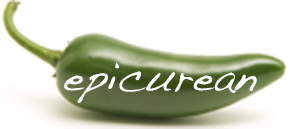Plan ahead to enjoy this great Southeast Asian treat, as it must soak in water to cover for at least three hours. Traditionally, whoever is cooking sets the breakfast rice out to soak the night before, and then leaves the supper rice soaking in the morning before heading out to school, to the office, to the rice fields.
Ingredients
- 2 cups long-grain sticky rice
- Water for soaking and steaming
Directions
Put the raw sticky rice into a medium bowl and add enough water to cover it by 2 inches. Leave it to soak for at least 3 hours and as long as overnight.
To cook, set up your steaming vessel. Bring about 4 inches of water to a vigorous boil over medium heat in the base of your steamer. Drain the rice well and transfer it to the steaming basket. Secure the basket of rice above but not touching the steaming water, and let it cook in a steady flow of steam for 30 to 40 minutes, checking the water level now and then and replenishing if needed. When the rice plumps up, glistens, and changes color from bright white to translucent ivory, test it by pinching up a small mouthful, rolling it into a ball, and eating it. If it's tender and chewy, it's ready.
Turn the cooked sticky rice out onto a cutting board or tray at once and spread it out into a fairly even layer to release steam and cool a bit, 3 to 4 minutes. Then gather the warm rice into a large mound and transfer to a serving plate or a gateep, a traditional covered serving basket. To hold it for longer than 20 minutes, cover it with a kitchen towel to help keep it moist. Serve hot, warm, or at room temperature.
Print this recipe
Submitted 2/14/07.
Source: Quick & Easy Thai by Nancie McDermott
Submitted By: b smith
Sticky Rice
